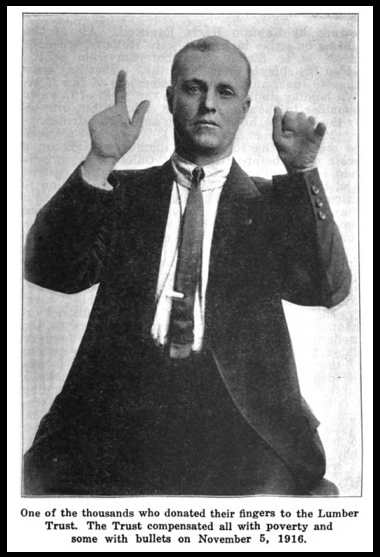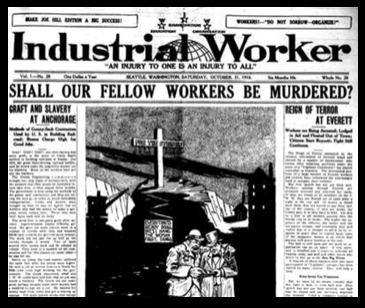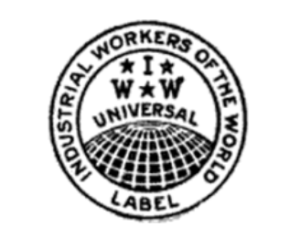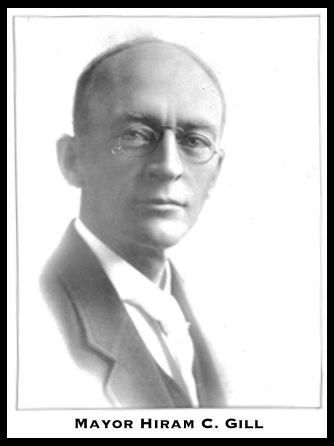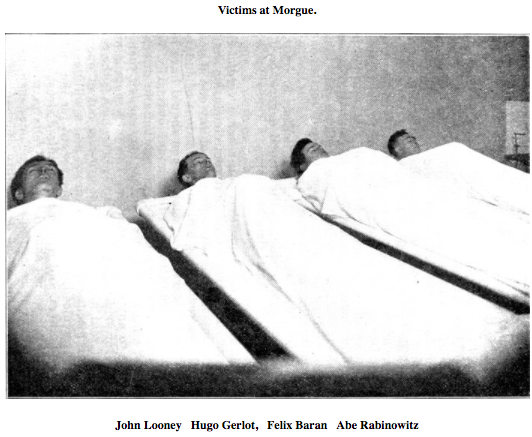You ought to be out raising hell.
This is the fighting age.
Put on your fighting clothes.
-Mother Jones
~~~~~~~~~~~~~~~~~~~~~~~~~~~~~~~~~~~~~~~~~~~~~
Hellraisers Journal, Saturday February 17, 1917
From Everett Labor Journal: Report on Industrial Warfare, Part III
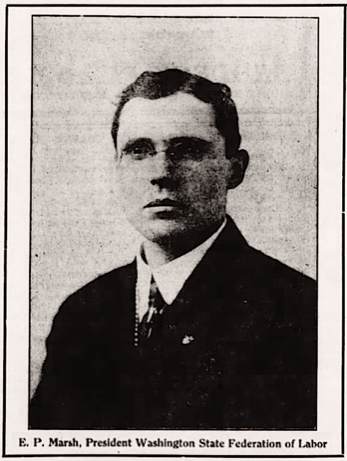
Over a period of three weeks, from January 26th to February 9th, The Labor Journal of Everett, Washington, published the “Report on Everett’s Industrial Warfare,” by E. P. Marsh, President of the Washington State Federation of Labor, which report he had delivered on Monday January 22, 1917, the first day of that bodies annual convention. Hellraisers Journal republished Part I of that report on Thursday; we offered Part II yesterday, and we conclude the series today with Part III of the Marsh Report.
EVERETT’S INDUSTRIAL WARFARE, PART III
EVERETT’S INDUSTRIAL WARFARE;
REPORT OF PRESIDENT E. P. MARSH
—–
Shingle Weavers Declare
a TruceA dangerous situation existed in Everett after the battle of November 5. Public feeling ran high and anything might have happened. Half a thousand citizens were under arms enraged at the Industrial Workers of the World and deadly determined to stamp out their organization in Everett. It is no exaggeration to say that, literally thousands of the working people of Everett were just as enraged toward the members of the Commercial Club who participated in the gun battle. I felt that the time had come when something simply had to be done to ease off the tense situation. As an instance of how high feeling ran let me tell you that on the following morning the mayor of the city appeared on the picket line with a high power rifle and told the union pickets that he had every reason to believe that an attempt might be made by snipers to pick them off. He asked them to scatter as much as possible, make no demonstrations whatever and declared he would defend them with his own life if necessary.
Within an hour after the battle I was in touch with Governor Lister over the situation. He advised me that he had sent the state adjutant general to Everett and would cancel all his remaining campaign engagements and come to Everett and personally take charge of the situation if I thought it necessary. One after another I got in touch with prominent ministers, attorneys and others whom I thought would act and suggested that a conference be immediately called to discuss the situation. On Monday morning a representative gathering met. Several of the most prominent men of affairs, in the city attended that conference. International President Brown, State Labor Commissioner Younger and Federal Mediator Blackman were also in attendance.

